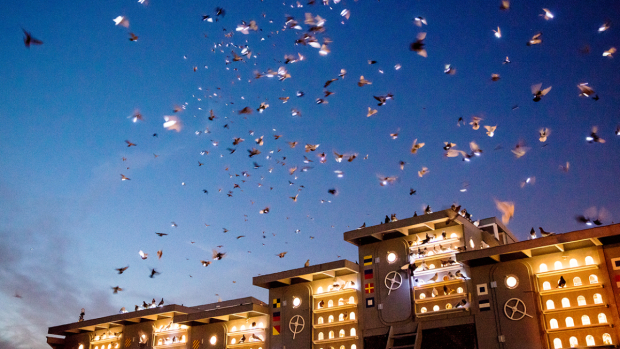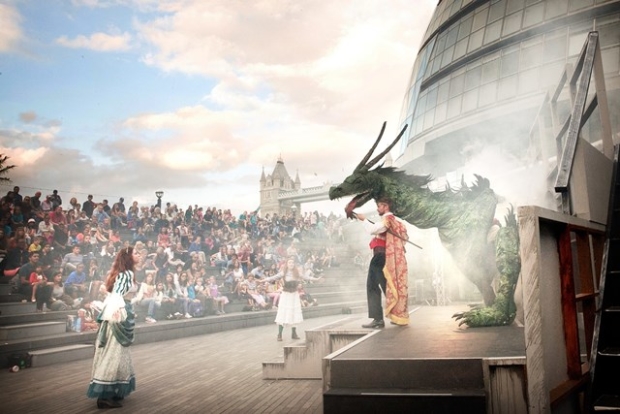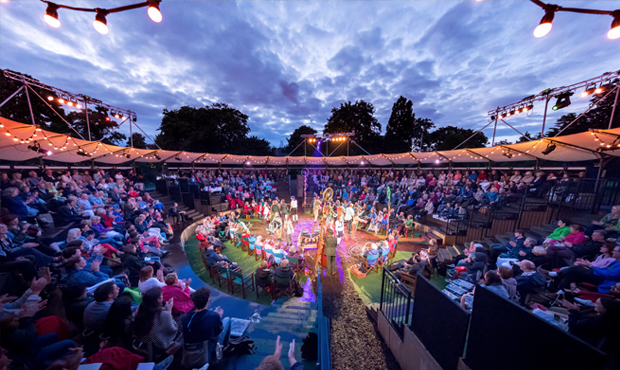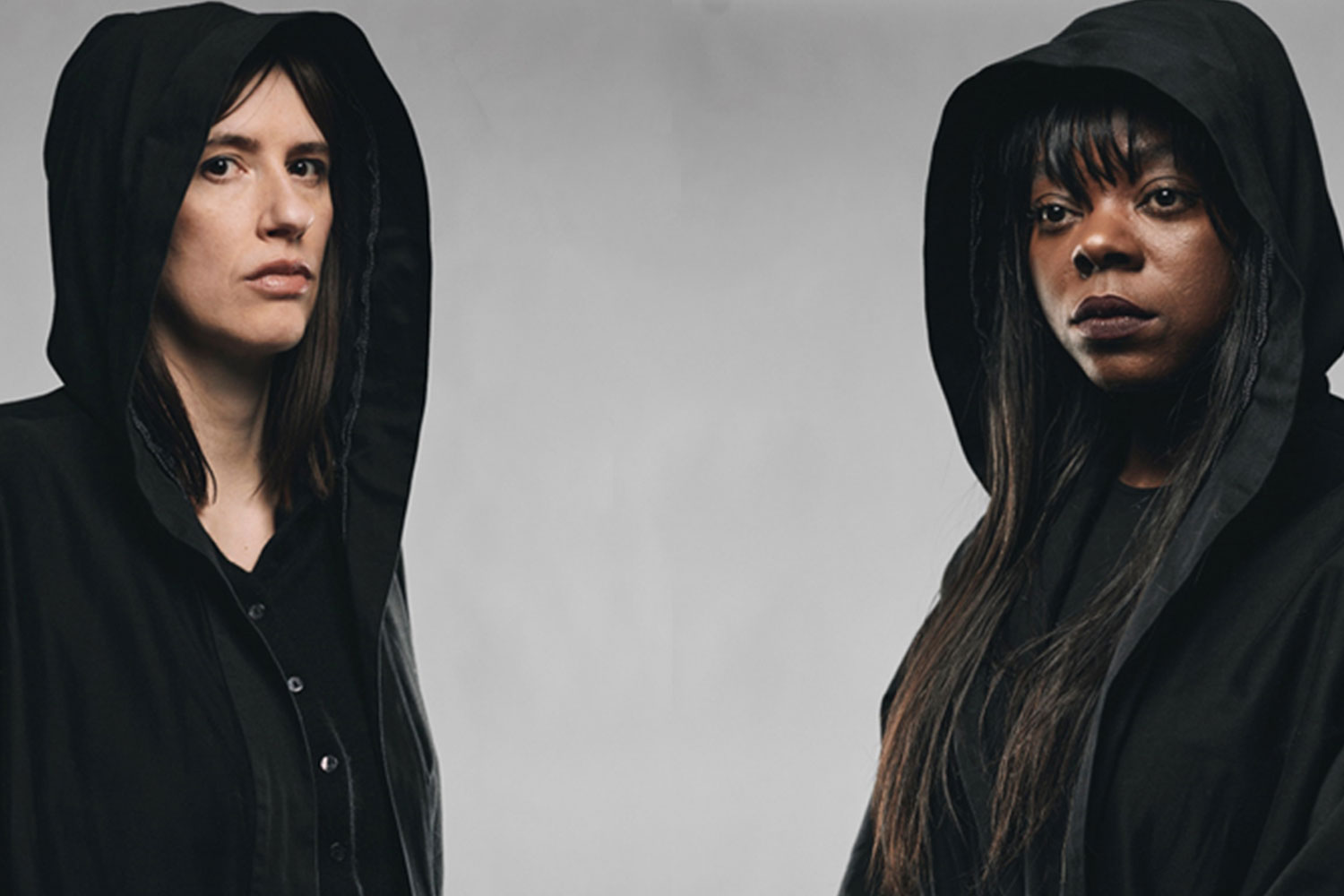Review: Belly of the Whale/Greenwich Fair (GDIF)

© Tina Koch
Remarkable what happens when theatre is out in the open. Everything Greenwich and Docklands International Festival takes place outdoors, from processions passing by to pigeons flying overhead. Its middle opens out in another way: a weekend-long free-for-all spread across Greenwich. There are no tickets, no charges, no limited capacities.
Three teenagers on bikes pull up to watch a dumbshow on stilts. Children chase clowns around the Old Naval College lawns. Some 700 people – families with picnics as well as intrigued passers-by – sit down to watch circus by the Cutty Sark. Drinkers leave the pub to have an explore; audiences nip inside for a pint. Everything's accessible and, crucially, everything's visible. Performance piques people's interest outdoors.
It's a proper festival, family-friendly and flushed by the sun, and like any festival, there are dots to be joined. This year, machines seem to have grabbed the controls. Bicycle Boy is driven by pedal-power, and Bootworks squeezes small shows into jukeboxes. There's a CAT scan-style contraption offering the journey of a lifetime like low-fi virtual reality. Two shepherd-like mechanics drive their Herd of Mechanical Creatures through the crowd – gazelles with gears, handlebars for horns. They're stilted and strange, but the idea that someone's built them is bizarre. It's not that they're life-like, more labour-intensive: machines without purpose. Are they creatures or creations, or both?
Robopole suggests something more productive. A Chinese pole on a blue robotic arm, it takes circus to a whole other level – part physical feat, part fairground ride. Martin Riedel clings to the pole with his legs, as it swings and slices through the air, 40 feet up. It scoops him off the ground, spins him round, flicks him off. Movement ups both skill and spectacle no end. It's questioning too. Who's leading, man or machine? How might the two collaborate, what might we achieve in a mechanised future?
Contemporary circus tends to create new apparatus. Belly of the Whale sits in a metal half-pipe that see-saws side-to-side. It's ribbed and hulking, like the hull of a ship or, indeed, the insides of a whale. Ockham's Razor's short public spectacle pits man against metal. It can be a playground or a prison. Nathan Johnston weighs it down, Stefano Di Renzo scrambles up the other side. Amanda Homa's rope routine in its middle expresses isolation. Sometimes, the three smash into its sides, tossed and turned by its weight. Sometimes, they get it under control: a swinging slack rope demands real poise, each slide is measured and weighted just right. It might feels slight as circus, softly-softly and kind, but as a kind of living sculpture, it's a sight to behold.
For all that invention, the trad can be just as effective. Sorriso is a classical dumbshow on stilts. Two masked giant figures walk through our midst: an elderly woman in a patchwork dress and an angelic old man in a feathery white suit. They court one another, tender and affectionate, and if it's quaint and sentimental, it's also ethereal and strange; the sort of timeworn spectacle that slows passers-by to a stop. The giants swap flowers, exchange balloons, dance and then die. To my left, a woman's in tears: floodgates open; hearts open too.
















